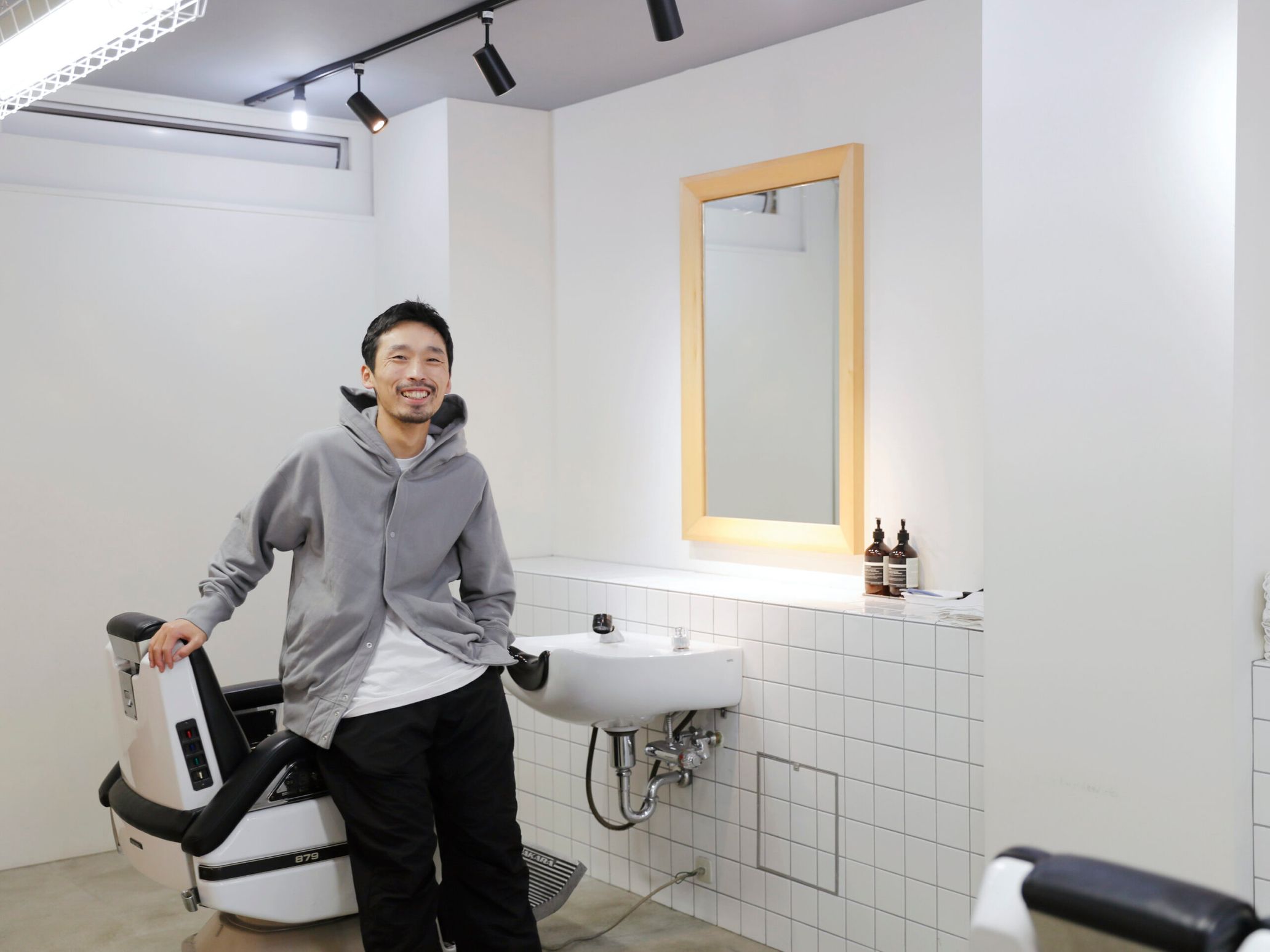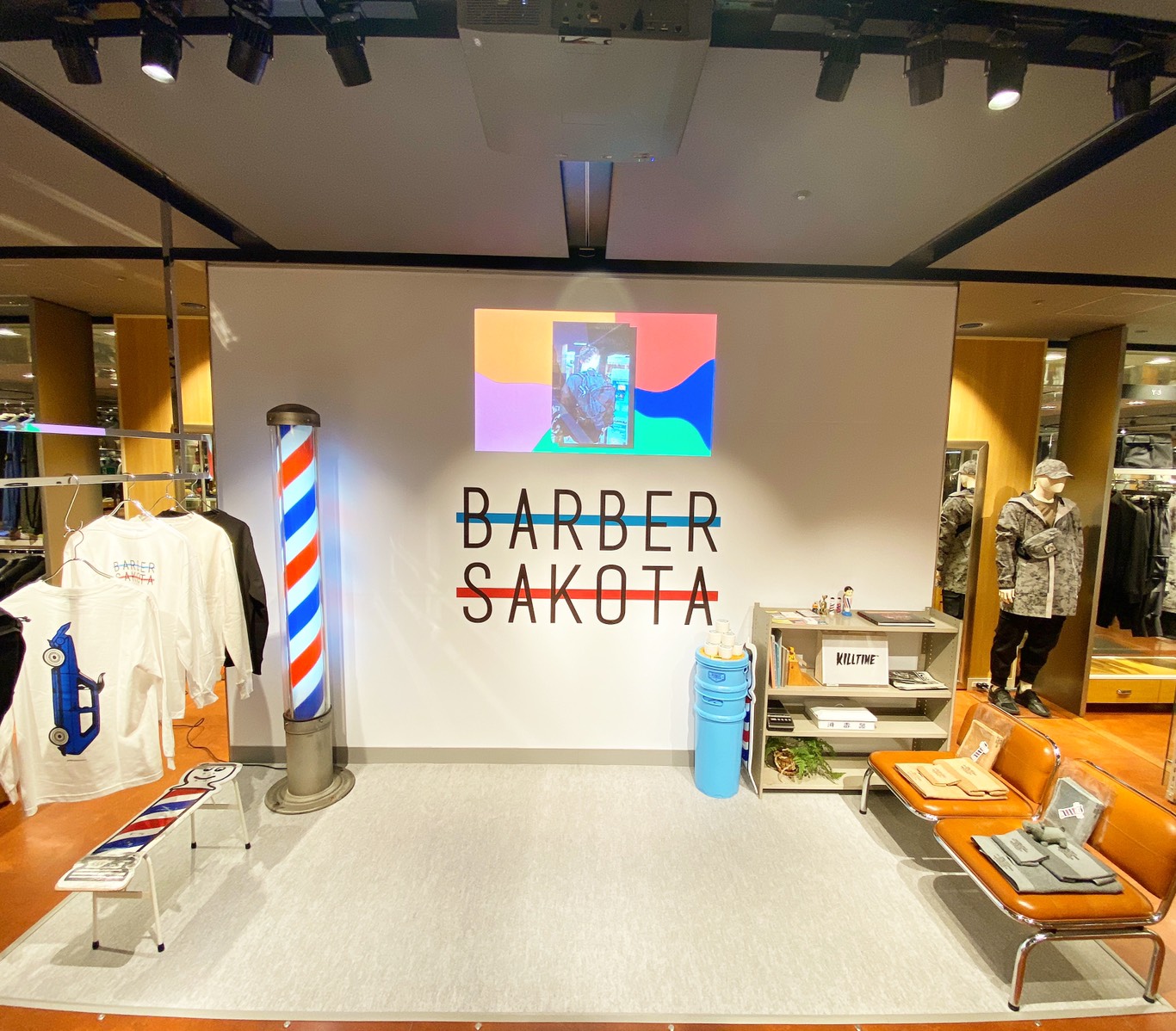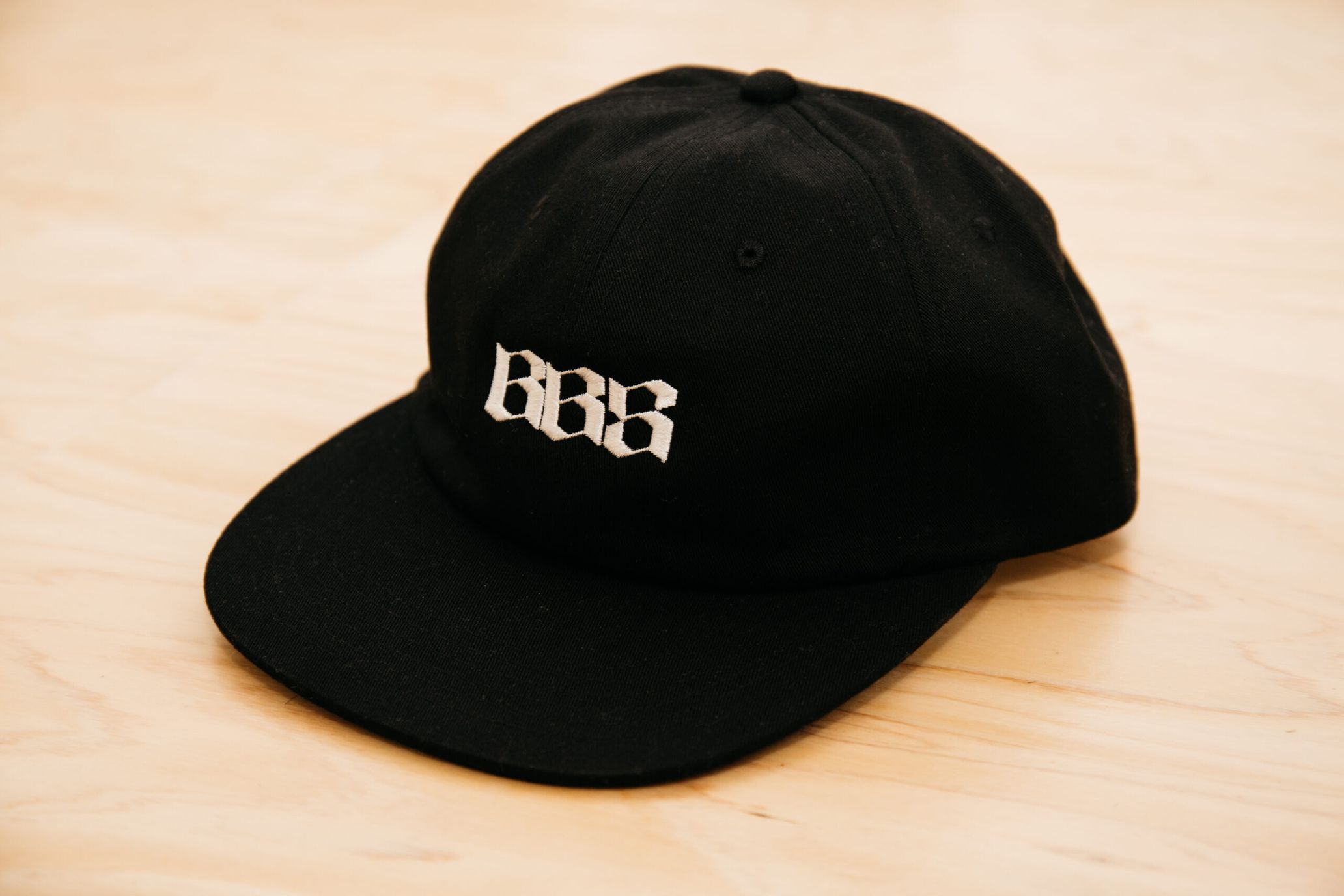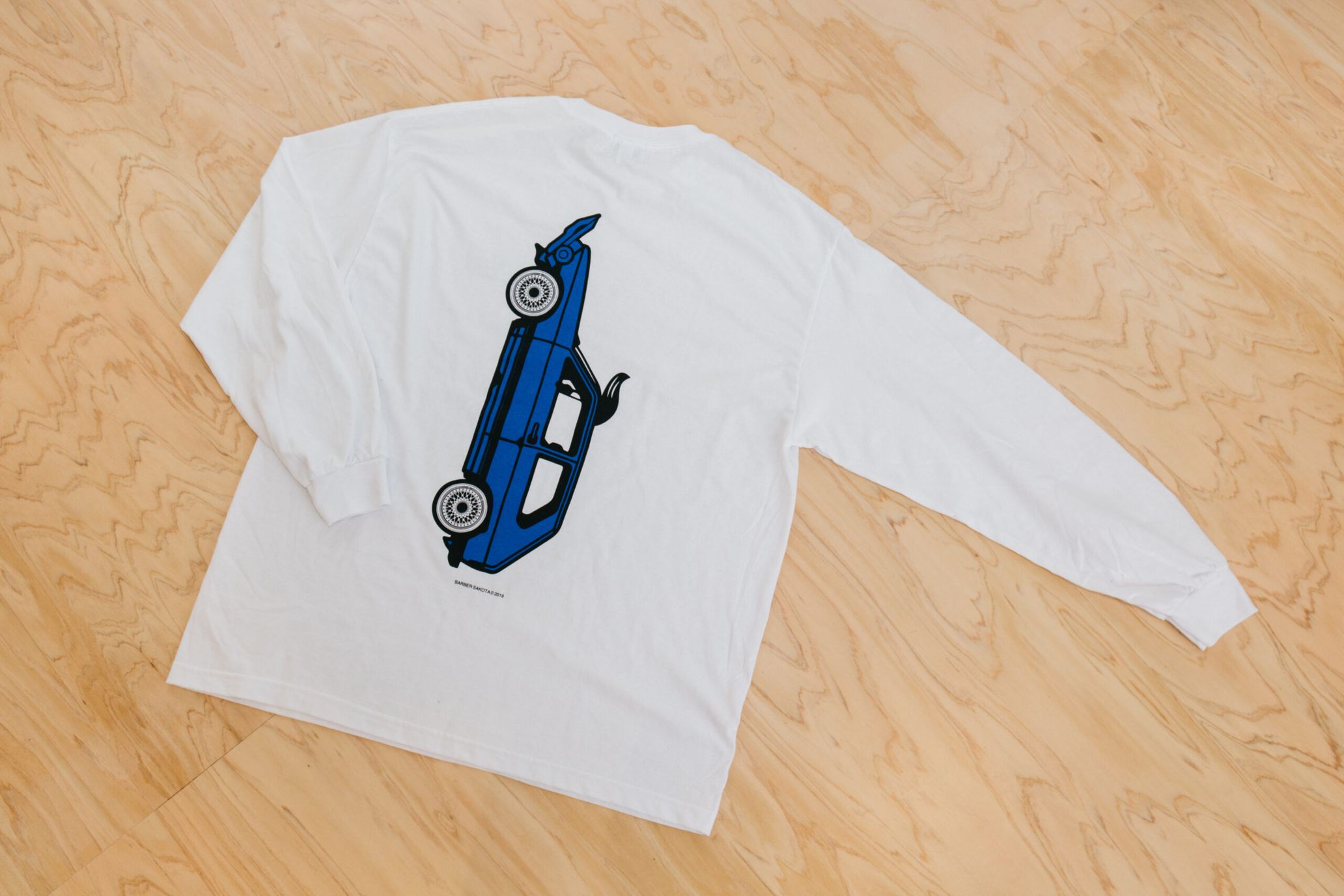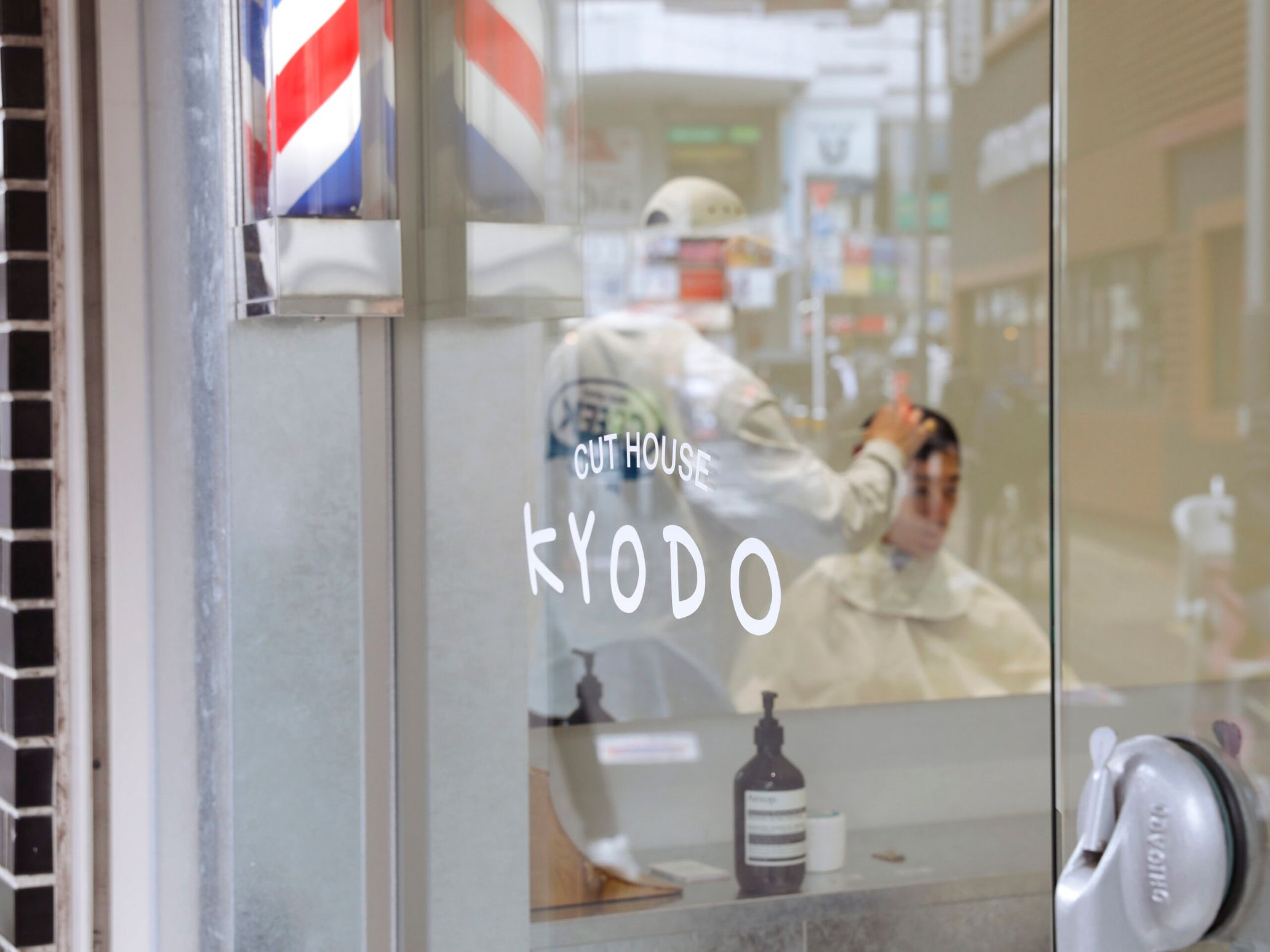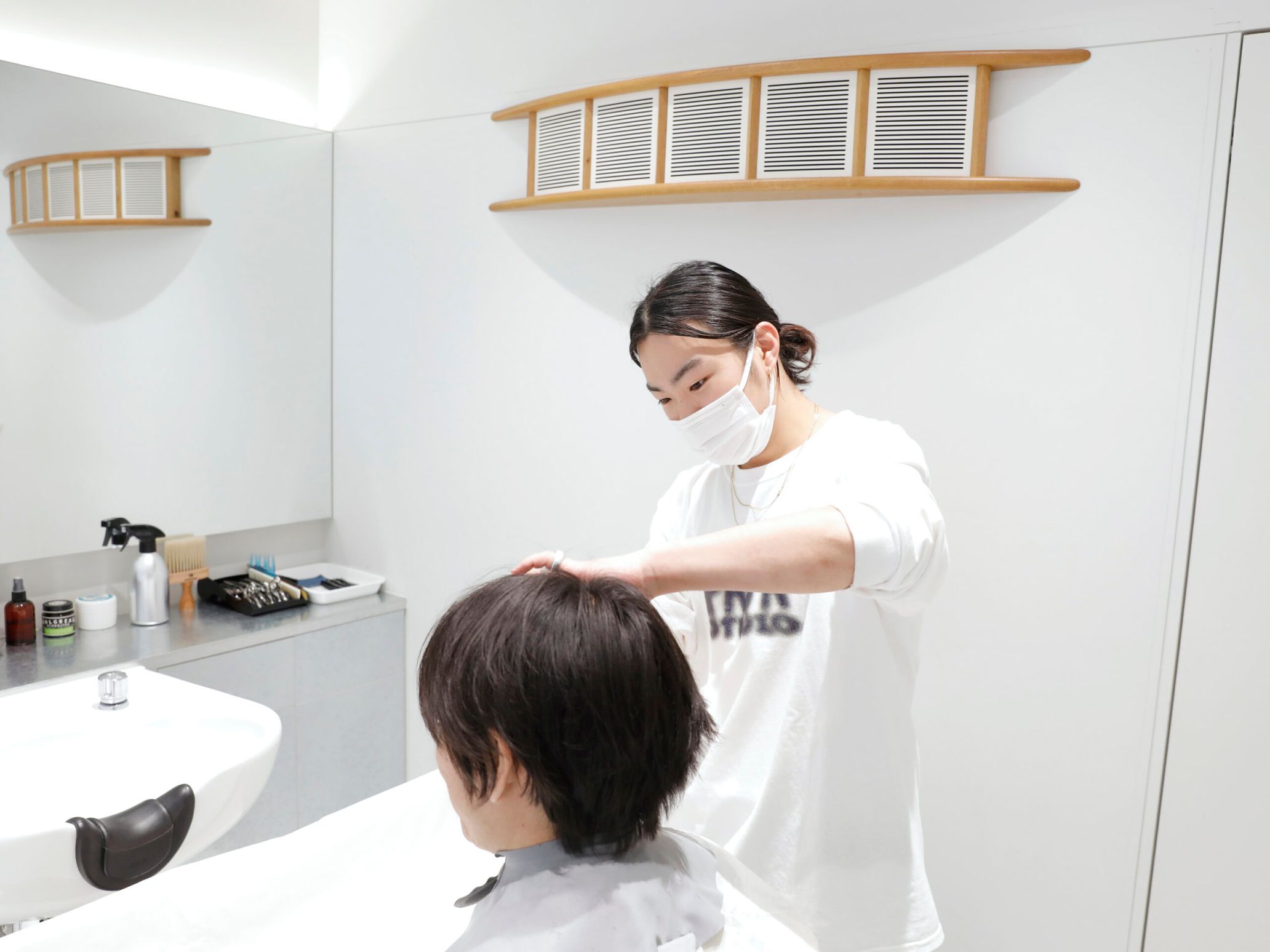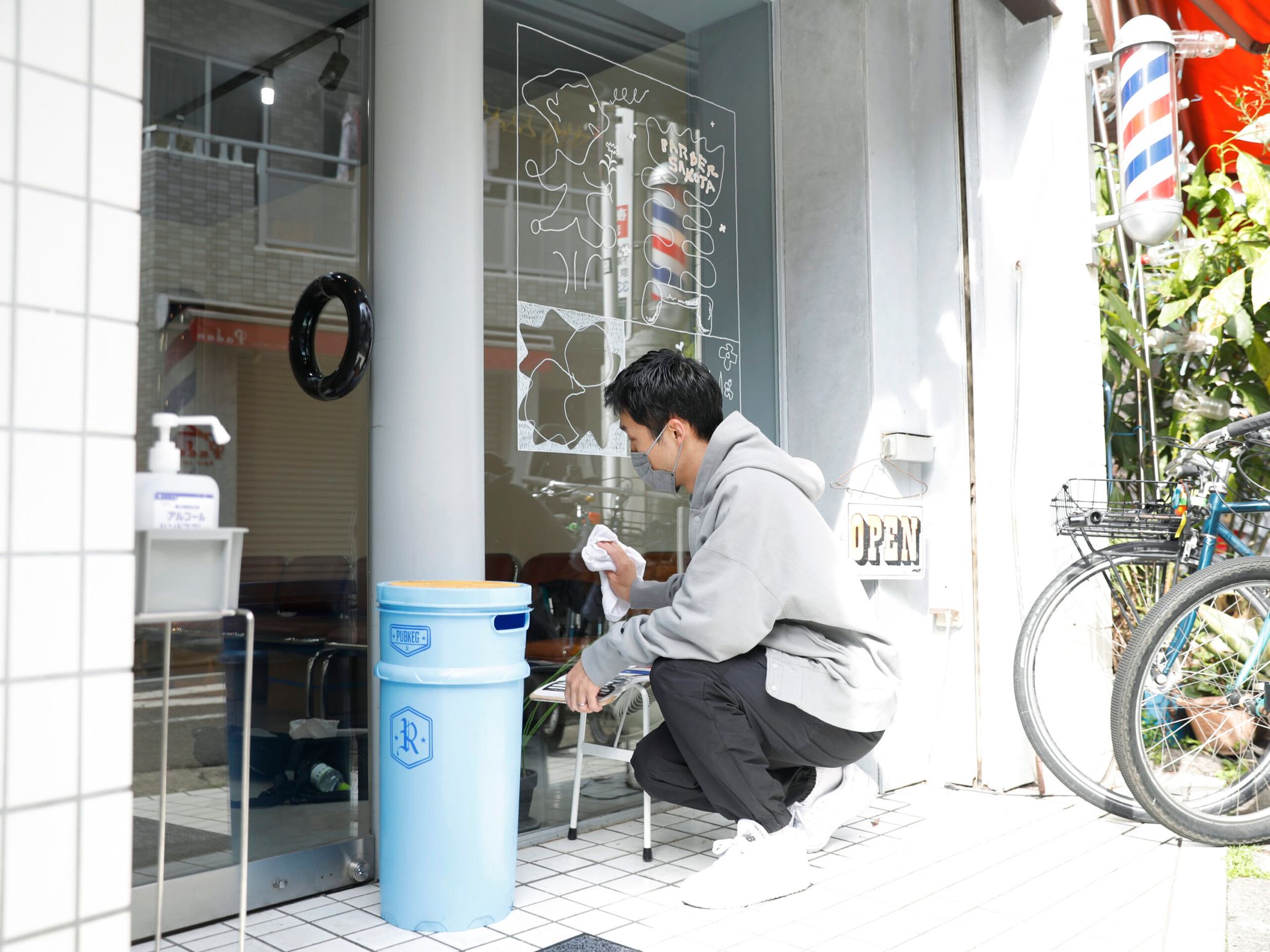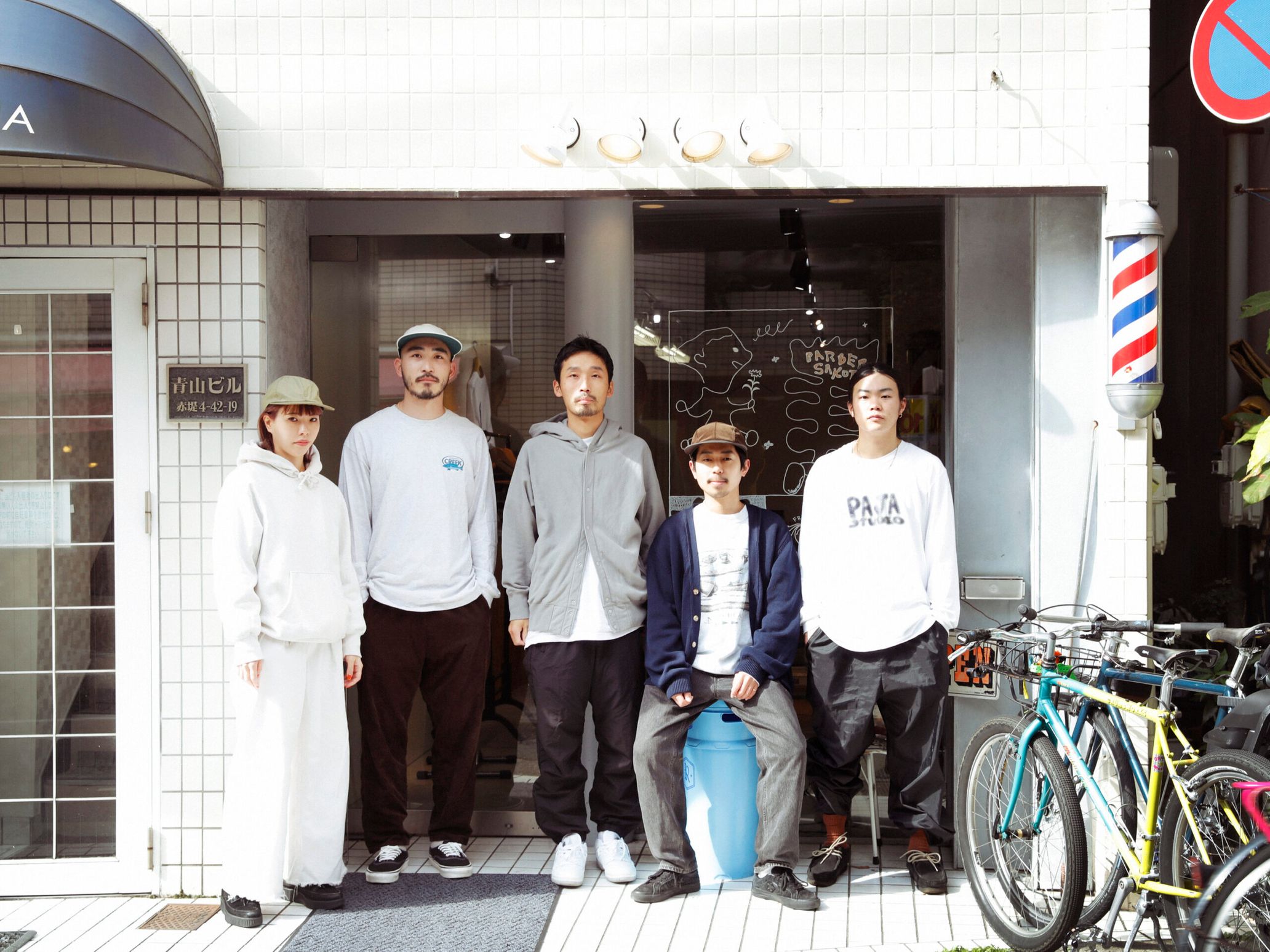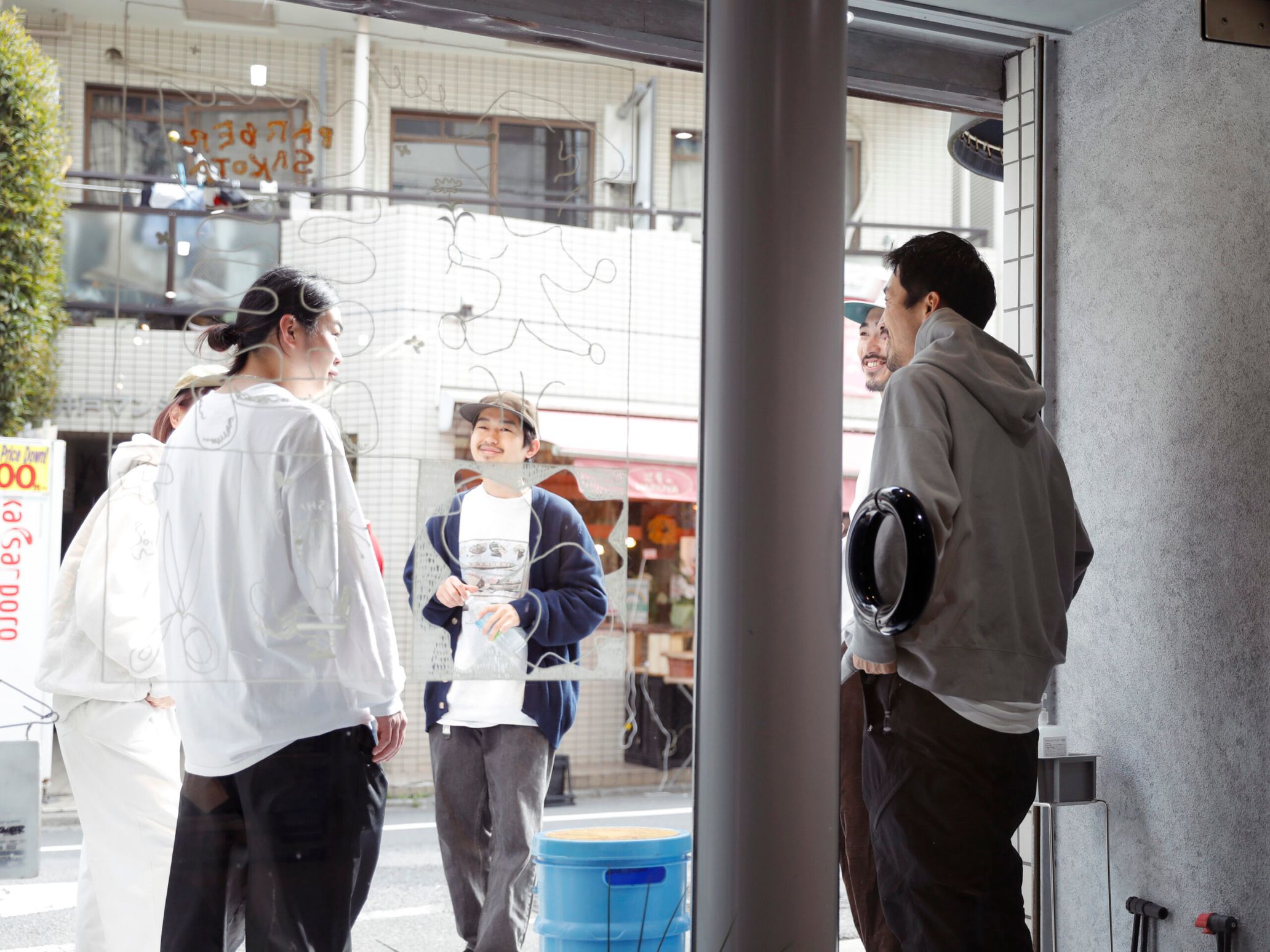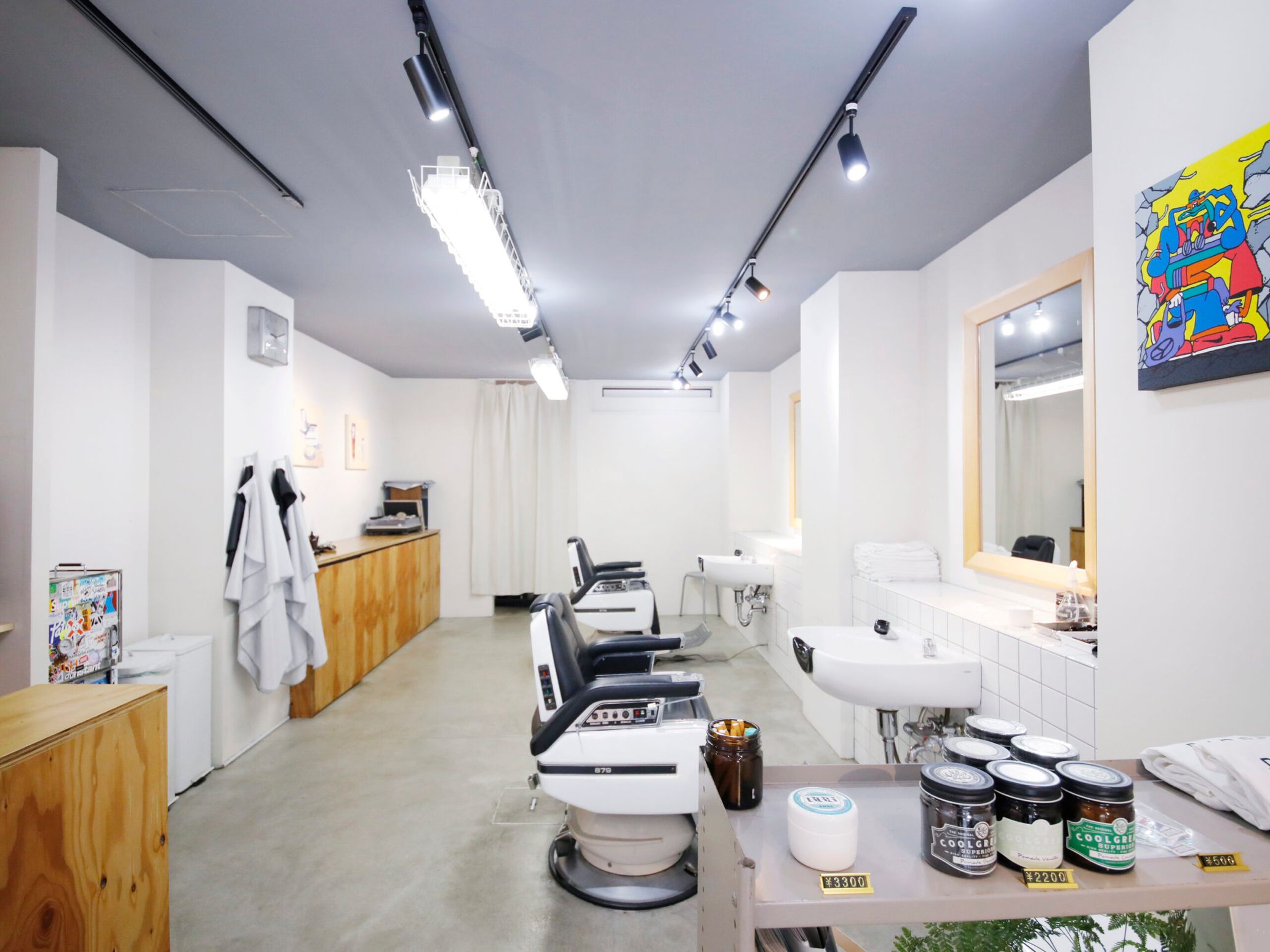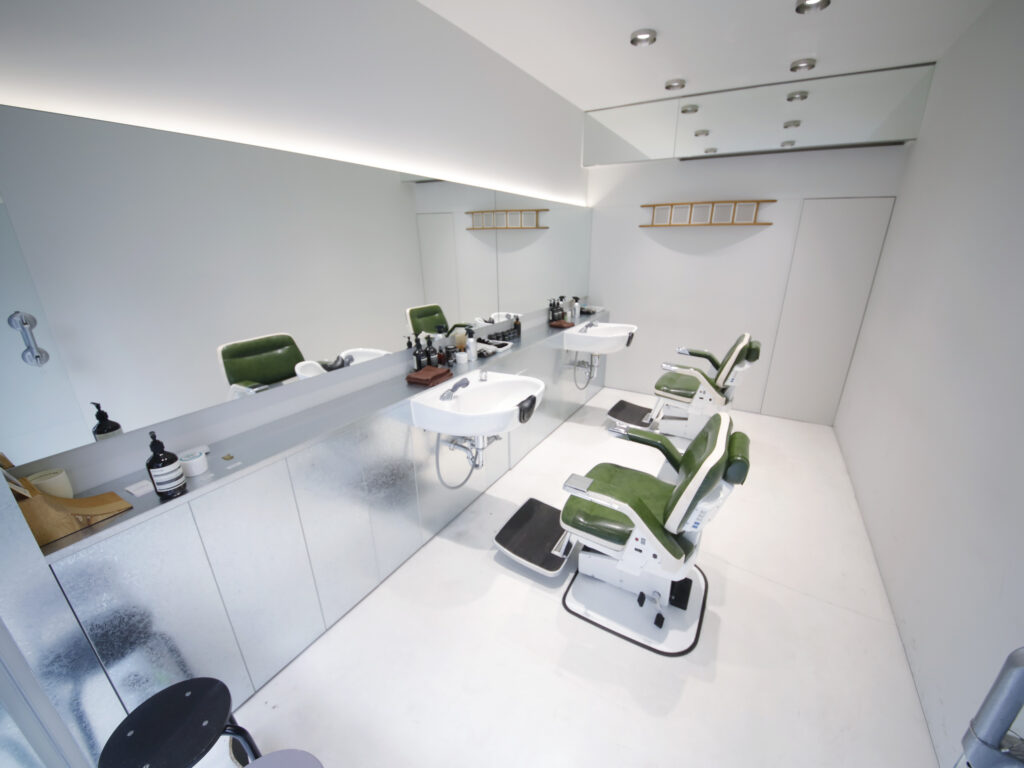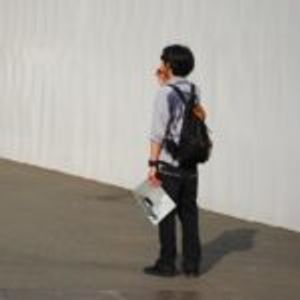There are more hair salons than convenience stores in Japan. That’s how closely tied they are to people’s everyday lives. Hair salons also link to fashion, music, and such, and they’ve formed their own culture. While many hair salons are opening one after the other, there are “local” barbershops that keep an original style, unaffected by trends. BARBER SAKOTA in Shimotakaido, Tokyo, is one of them.
Founder Masaki Sakota incorporates cultural elements he likes, such as skateboarding, art, and fashion, into a traditional Japanese barbershop. He’s gained a loyal following from the fashion and music world because of this unique shop. This February, he went beyond the limits of a barbershop and had a pop-up store at Isetan in Shinjuku. It became a hot topic. Where should BARBER SAKOTA head to amid this turbulent pandemic? We spoke to Sakota-san about this and his past as well.
The significance of a local barbershop and a big department store having a collaboration
――We get dressed up and go out less than before now that we spend more time at home because of covid. What do you think of the chaotic year of 2020 in retrospect?
Masaki Sakota (Hereinafter Sakota): I’d be lying if I said the pandemic didn’t affect me. It really [affected me] around March and April 2020. There was this pressure like, “I shouldn’t even go on a train.” The number of regular customers went down dramatically. Almost everyone canceled their reservations, and so I was in a tough spot. But I didn’t shut the shop down. Whenever I had no customers, I would close it for the day; I responded to the situation and thought about what I could do then.
That’s when I decided to start an online store because I had time on my hands. A new staff member joined us right then. Until that point, I would directly sell the shop’s merchandise to customers who came to or called the shop and through Instagram DMs. But I had wanted a proper online store one day. This is how I opened an online store at the end of April 2020.
――What sort of products do you sell online?
Sakota: Original items like the t-shirts we have at the physical store and hair grease. When I launched the online store, I felt like that wasn’t enough, so I sold my friends’ and my belongings like a flea market (laughs).
――It’s rare for a barbershop to sell shirts, bandanas, and other fashion items. Why did you decide to produce these?
Sakota: Here’s the backstory: I asked Goro-san from MIN-NANO, who has been creating logos for other shops for a long time, to design a logo. Because he had designed a logo, I wanted to make a logo shirt, like a band making their merchandise. I naturally started to create merchandise. Goro-san also designed the shirt we’ve been selling since the shop opened.
――The catchy design is nice. Speaking of merchandise, you had a pop-up event at Isetan Men’s in Shinjuku in February. This was also a unique thing for a barbershop to do. Could you talk about what kind of event it was?
Sakota: I got an offer through an old friend who works at one of the shops in Isetan around November. I felt like it was a big deal for a local barbershop and a big department store to collaborate, so I said yes after two email exchanges. In addition to the collaboration merchandise we had been selling, I asked my mentors for new items, which I hadn’t been able to because I felt like I was asking for too much. Thanks to them, I sold archive and collaborative pieces. It was a meaningful pop-up event.
“You can work as a barber even when you grow old.”
――Let’s change the topic for a bit. Could you talk about how you came to start your “local” barber? Why did you pursue becoming a barber instead of a hairstylist?
Sakota: This goes way back, but I didn’t want to become a university student or an adult when I was in high school (laughs). Now that I think about it, I was so bitter. I was like, “I don’t want to be a university student, but I also don’t want to work yet. I should go to a vocational school!” And so, I went to check out a vocational school.
――Was it a hairdressing school?
Sakota: No. It was a school for people who wanted to become motorcycle mechanics (laughs). I was obsessed with bikes at the time, and I was like, “A bike mechanic? So cool!” and so I went to check it out. And when I got there, everyone was a bike nerd. I liked bikes, sure, but I didn’t have enough knowledge to call myself a bike nerd. I felt like I couldn’t be on their level, so I gave up on becoming a bike mechanic. The next place I went along with my friend was a beauty school.
――(Laughs). So, you didn’t even think about cutting hair at the time?
Sakota: I didn’t (laughs). But after taking a tour of that school, somebody said something I’ll never forget: “You can work as a barber even when you grow old. You can only work as a hairdresser when you’re young.” I don’t remember who told me this, but I can’t forget those words. It might sound silly, but it forced me to think about the future and act accordingly instead of messing around. I decided to be a barber for as long as I live. Hairstylist culture was at its peak, so I wanted to try my best at being a barber rather than competing against them. Now, I honestly feel like you can be a barber even as you grow older.
――Having a job you can do for a long time is imperative. I heard you built your resume at FREEMANS SPORTING CLUB, which specializes in the field of hairstyling and lifestyle. Has your experience there been informative?
Sakota: I’ve had previous experiences before FREEMANS SPORTING CLUB, but I got a lot of influence there. I guess you can call it a barbershop inside a clothing store. Back then, there weren’t many barbershops that also ran another kind of business on the side. So, it taught me a lot. I host photography and illustration exhibitions at BARBER SAKOTA, largely because of their influence. The people I met there particularly affected me. I still keep in touch with them, and they support me.
I met the photographer Yuki Aizawa, who had an exhibition at BARBER SAKOTA, previously, through them.
The traditional vibe of a Japanese barbershop
――I’d like to know more about the photo exhibitions. How do you choose artists for solo exhibitions and people for pop-ups?
Sakota: People sometimes tell me they want to [exhibit their work], but I usually approach those I know very well and whose sensibilities I like.
――Which artists and pop-ups have you had at the barbershop?
Sakota: A used clothing store called Adult in Kichijoji, a vintage toy shop in Hatagaya called Russet Burbank, Hiraparr Wilson, an illustrator who drew on my barbershop’s display window, and Yu Todoriki, an illustrator. I met them all separately, but they’re my close friends.
――It’s interesting how the exhibitions at your barbershop are unlimited, as seen in the photo exhibitions, pop-ups, and more. You also produce your own hair grease, host a radio show, and are active across different fields.
Sakota: Concerning the grease, I had always wanted to make my own hair grease. Just then, a customer introduced me to a manufacturer. This is also another incident that created human connection. I started selling them last October. I was very particular about researching organic [ingredients]. I used to have rough hands, but ever since I switched to using organic grease, they’ve gotten much better.
Regarding the radio show, I started it in 2020. I started it because I felt like I wasn’t talking to patrons of the barbershop and people around me properly, even though they’re interesting. I initially was considering doing a talk show, but I went with doing a radio show because it was easier. And I didn’t have to have a physical audience. I upload one recorded episode per month on Mixcloud.
――What topics do you talk about on the radio show?
Sakota: It’s a free-flowing conversation, where I invite someone I want to get to know better. But I always ask them about music. I hope to continue inviting people I want to talk to and uploading the episodes periodically.
――I’ll be looking forward to it. It sounds like you were very active in 2020, despite the pandemic.
Sakota: I didn’t mean to. But by the time I realized it, I was working a lot. The things I had been working on in the past coincidentally happened at once. The same goes for the launch of our sister store too.
――A sister store! I think your drive is admirable. On top of BARBER SAKOTA in Shimotakaido, you also opened CUT HOUSE KYODO in Kyodo, the sister store. How did this come about?
Sakota: You can say it’s because I found a decent place to rent. But to be more specific, it became difficult to handle new customers at BARBER SAKOTA. Even when people contact the barbershop, it’s becoming harder to attend to them [by myself]. So, I hired new staff and found a good estate, which led to opening [CUT HOUSE KYODO]. My position regarding the Kyodo barbershop is the owner, as I’m usually at the Shimotakaido one.
――What kind of staff are at CUT HOUSE KYODO?
Sakota: There’s Morita and Takahashi at the Kyodo one. Morita is an old skateboard buddy, and Takahashi is a friend of Sakamoto, who currently works at BARBER SAKOTA. I trust both of their skills, so please visit them!
――Both barbershops are as simple as they can be. What are the concepts behind them?
Sakota: I made both places with traditional Japanese barbershops in mind. FREEMANS SPORTING CLUB, my previous workplace, is based on American culture. Mine is your typical Japanese barbershop. This partially derives from my desire to do this for a long time, but I also wanted the shops to be unrelated to trends. I thought about continuing to do this for 20, 30 years. That’s why the interior is simple and not over the top. The chairs our customers sit on are repaired chairs people used to sit on in the late 90s.
――The vibe of a Japanese barbershop is interesting.
Sakota: I wanted [that vibe] if I were going to aim for a barbershop rooted in its surroundings. I guess you can call it a Showa-like feel. Having a shampoo stand in the front is [an example]. [Western] barbershops usually have them behind the seat, or they wouldn’t have it in the first place. Giving the customers a wet towel is also unique to Japanese barbershops.
――Are there other things you try to push for?
Sakota: I try not to suggest what the ideal barbershop should look like, specifically. All I want to do is to provide what the customer wants to the best of my ability. In other words, I want to give the customer what they want. Some people aren’t confident in describing what hairstyle they want, so I would like to understand what they’re saying, even if they don’t say much, and grant their wishes.
Wanting to express the possibilities of barbershops to the young generatio
――I’d like to know how barbershops should strive to be like in the future. Aside from the influence of covid-19, I hear there’s a decline in barbershops compared to hair salons today.
Sakota: After establishing two stores, I’m confident I can do this job for a long time. It’s difficult to talk about the barber industry as a whole, but I feel like barbershops with different styles have increased, aside from mine. I say they’ve increased, but because we don’t have this united spirit to make the barber industry thrive, the decline might not stop.
But there’s got to be something only I could do. For instance, the things I’ve spoken about, such as making my grease and merchandise, are things only I could’ve done. I’d be happy to express the possibilities of barbershops to the younger generation while cherishing connections with people. I want to tell people that you could work as a barber even when you grow old. But cutting hair is the priority. If you neglect that, then you’d be getting your priorities backward; I hope I could expand my horizons while continuing to focus on cutting hair.
Masaki Sakota
Born in Tokyo. After graduating from a hairdressing school, he built his resume at FREEMANS SPORTING CLUB. He opened BARBER SAKOTA in Shimotakaido in 2016. After that, he opened CUT HOUSE KYODO in 2020 and works at the Shimotakaido store as the owner of both barbershops.
Instagram:@barbersakota
■BARBER SAKOTA
Address: Akatsutsumi, Setagayaku, Tokyo 4-42-19 Aoyama Building 1st floor
Opening hours: 10 am to 8 pm
Holidays: Monday
Phone: 03-6379-1134
https://www.barber-sakota.com
Instagram:@barbersakota
■CUT HOUSE KYODO
Address: Kyodo, Setagayaku, Tokyo 1-21-11
Opening hours: 10 am to 8 pm
Holidays: Tuesday
Phone: 03-4362-6117
https://cuthousekyodo.com
Instagram:@cut_house_kyodo
Photography Shinpo Kimura
Translation Lena Grace Suda

